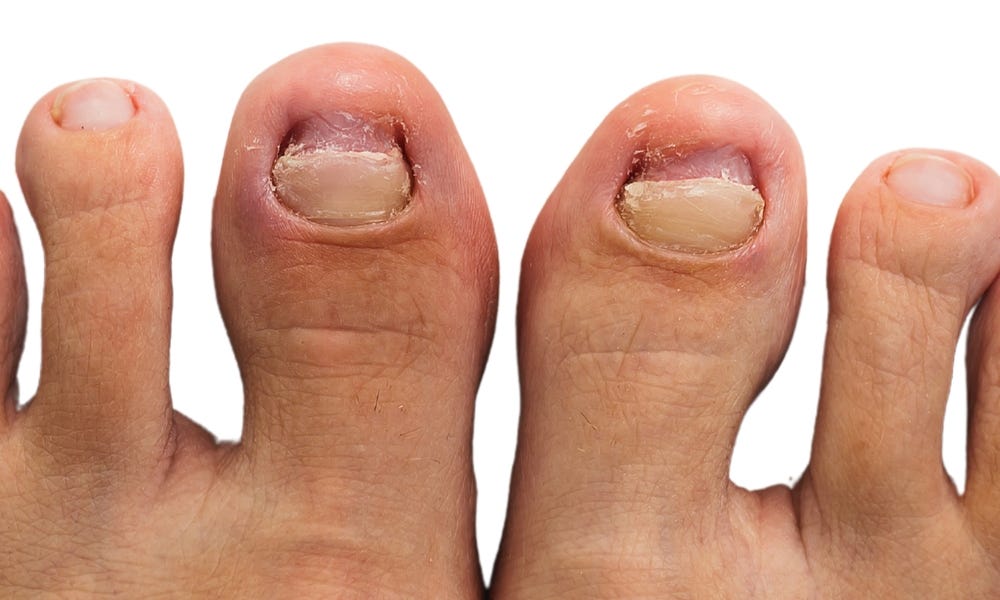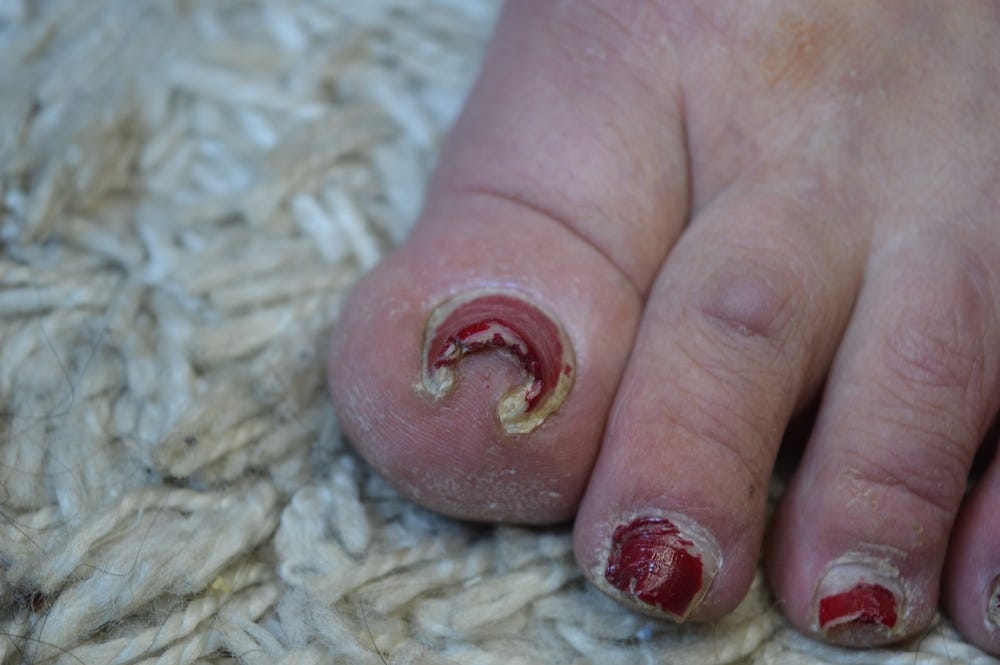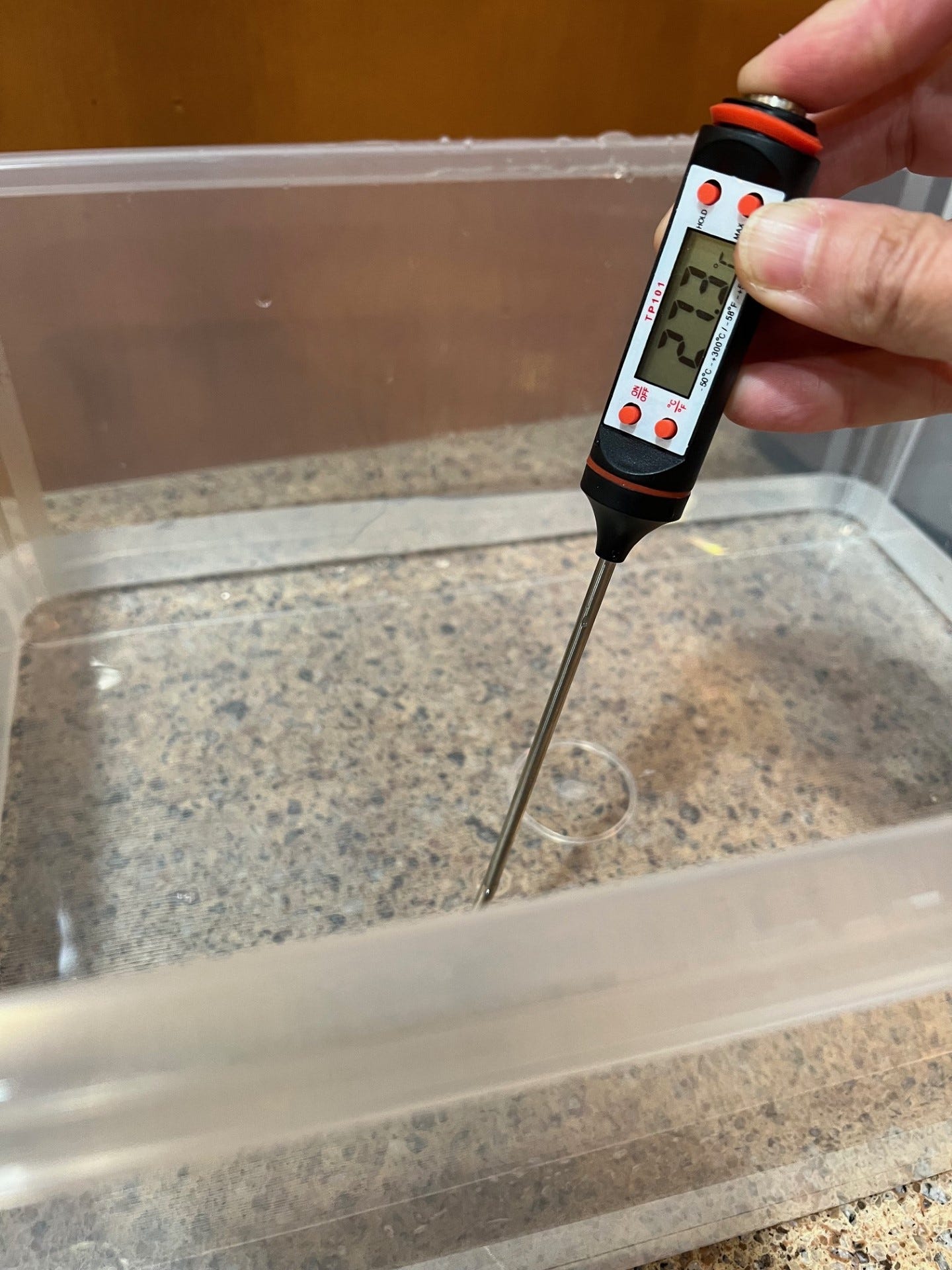Ingrown Toenails
A Primer on Pain and Infection (Part 1)
Your toenail is causing you pain. How do you know if you need an antibiotic? Do you need the toenail taken off? The questions can be overwhelming. Many of my patients decide to go to the ER or their family doctor first, and sometimes express frustration that the doctor “didn’t want to do anything.” Most ER and family doctors don’t get training specifically on ingrown toenails. I highly suggest going to your PODIATRIST with ingrown toenail concerns FIRST if your circumstances allow. Let me explain the thought process that goes into treatment for an ingrown toenail.
The Shape of Your Nail Starts the Problem.
We have all likely heard the advice, cut your toenails straight across. That works great—if your nail isn’t too wide, too curved or too thick. Like most “one size fits all advice,” it may not apply to you. Here are some nail types that can cause problems:
The Fan Shaped or Wide Nail: This type of nail should be left a little longer and cut straight across. It’s nice and flat. You should always cut your nails so you can see the corners on the ends.
The Thick Nail: Any thick or loose nail should be cut off or sanded from the top down and from the tip of the nail toward your foot. The thickness of the nail ALONE can cause pain and inflammation. It can lead to the toenail hitting your shoe, causing pain, or lead to infection of the skin. See this episode here for details on how to safely treat these thick nails.
The Curved Nail: This nail does not do well being cut straight across. Your shoe will hit the top of the nail and drive the two curved sides straight down into the flesh of your toe. This toe will hurt unless you gently angle the sides and remove the curved area of the nail.
If you have this curved shaped nail, I suggest making an appointment with your podiatrist to ask about a procedure to permanently narrow the nail. Don’t wait to take care of deformed nails. If you become high risk, such as having poor circulation or diabetes, you may not be healthy enough for a preventative procedure. Ingrown toenails in high-risk patients can lead to amputation. I highly recommend partial permanent nail removals for preventative care.
Cut Your Toenail ALL THE WAY ACROSS
Improperly cut nails are a very common cause of ingrown toenails. If you don’t cut your nails all the way to the edges, you could end up with a piece of nail left behind which can stick into the skin like a dagger. Like this:
Turning your toenail into a knife is a great way to set yourself up for an infection. If your nail plate is wide or your skin is fleshy, you may not be able to see the sides of your nail. To get a better look, you may have to gently lift the edges of your nails up with a clean, metal nail file to make sure you cut it all the way across. If you can’t see the edges of your nails by lifting the edge up, allow the nail to grow longer toward the end of your toe until it is visible. Avoid cutting them short and letting the sides disappear back into the pulp. Please don’t allow your toenail to grow PAST the end of your toe, as you may bump the nail and set it up for infection that way.
What does an INFECTED ingrown toenail look like?
Infection is typically present when two or more of these can be seen. The more of these signs are present, the more likely it is you have an infection of the skin:
Redness
Pain
Swelling
Odor
Pus
Hot to touch
Inflammation typically happens before infection develops.
Some signs of inflammation include:
Redness
Pain
Swelling (feels spongy to touch)
Because inflammation and infection look so much like one another, you should get the opinion of a medical professional as to which one you have. Serious infections require an antibiotic. Inflamed ingrown toenails are treated by removing the painful part of the nail and soaking the toe. Antibiotics are not appropriate for inflammation.
Here is what inflammation can look like:
PUS or ABSCESS:
If you have PUS, it usually means that you have an abscess type of infection. Typically, if you release the trapped pus, your symptoms will improve. Soak your toe, and then try to get the pus to release. Pus can sometimes be released by gently pressing back the edge of the skin around the nail or using a blunt metal nail file to poke under the skin. (Men—no pocketknives. You know who you are). Typically, you STILL need to address any deformed or improperly cut nail to keep the problem from returning. Your podiatrist can help you assess if part of your nail needs to be temporarily removed. You can have the toe numbed up with anesthetic for the temporary toenail removal procedure. Remember that soaking is a key part of resolving an abscess. You typically will not need an oral antibiotic to resolve an abscess.
Who Needs an Oral Antibiotic?
This guy. This guy needs to see his podiatrist ASAP.
The rest of you, start with soaking and looking for the offending part of your nail. And if THIS GUY has a wait to see his doctor, he needs to start soaking also. Soaking your feet for ingrown toenails is a good first step (see below).
How to Safely Soak your Feet.
All my patients get the same instructions on soaking their feet for ingrown toenails.
Use Lukewarm water only. Hot water can burn the skin, and people with underlying health conditions like diabetes may not be able to feel the temperature of the water accurately. That is why diabetics are told not to soak their feet. It is to prevent accidental burns. Lukewarm water is fine on a diabetic foot. But very hot water is not. Diabetics can use the inside of their elbow or a thermometer to test the water temperature more accurately.
If it’s too hot for your elbow, it’s too hot for your foot.
82 degrees F to 86 degrees F would be a safe range (or 27 to 30 degrees Celsius). Diabetics can also get a non-diabetic family member to test the water temperature for their safety. Every time you read that diabetics should not soak their feet; you are reading medical-legalese due to diabetics burning themselves. If you take extra precautions to prevent burning, you should be safe to soak your ingrown toenail.
15-20 minutes should be adequate for a soak. No need to prune your toes.
You may squeeze a little Dawn dish detergent, vinegar, or Epsom salt in the soak, but water alone is fine.
Please don’t fall after soaking. Prepare your soak in an area without a slippery floor and dry your feet thoroughly before standing. I do not recommend using oils of any kind in your soak due to potentially leading to slip and falls.
Last but not least, start with a clean soaking pan and wash it with disinfectant afterwards. You are getting bacteria in the pan. Don’t reuse a soaking pan without a thorough disinfection (Such as bleach solution).
To sum things up, when your toenail starts hurting, start safe soaking, and look for the offending piece of nail. If it fails to improve, go see your podiatrist. Your podiatrist can address any toenail deformities, prescribe an antibiotic (if needed), and may help you with procedures that can keep the ingrown toenails from coming back.
As always, I am not your doctor. This is basic information to help you understand your visit with your local podiatrist, who knows your medical background and risk factors. Please seek medical attention if you think you have an ingrown toenail infection or if you need advice more specifically tailored to you.
Thank you for being curious!
Dr. C.











